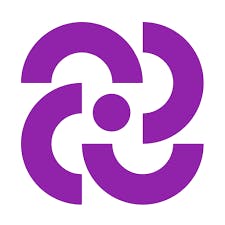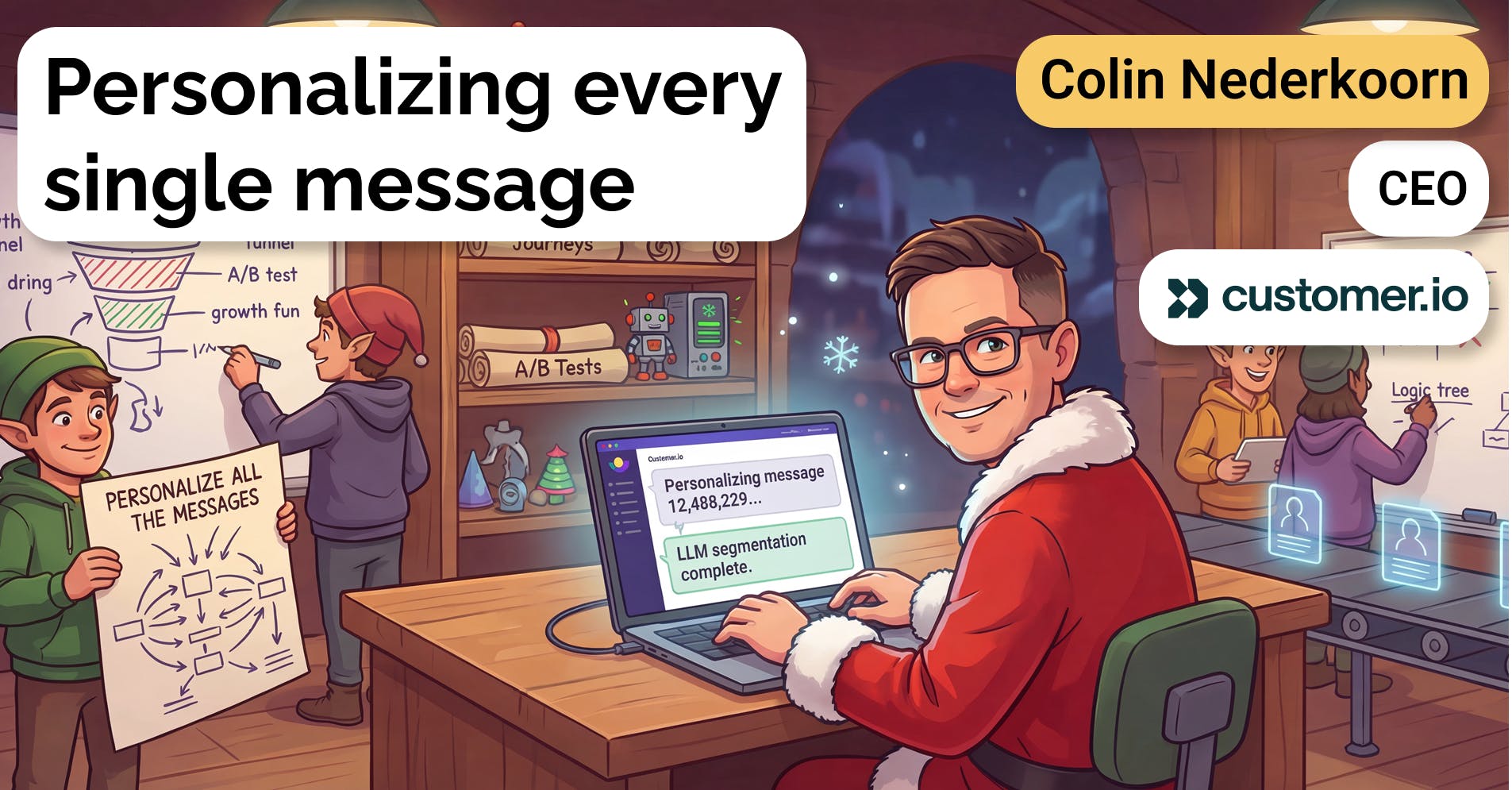Andrew Hoag, CEO of Teampay on building expense management for the enterprise
 Rohit Kaul
Rohit Kaul

Background
Andrew Hoag is the founder and CEO of Teampay, an expense management platform. We spoke to Andrew about competitive dynamics in the expense management market, Teampay's GTM strategy, challenges in scaling corporate cards, and selling into the enterprise.
Questions
- What went into starting Teampay? What problem are you solving and what’s the core use case that’s giving Teampay traction?
- Early on Teampay incorporated a Slack app, something that not many expense management companies have done. What thought went into setting up that integration?
- How did the Slack and Teams integrations impact the product strategy for Teampay?
- Are these app integrations your primary go-to-market channel? Or are there other channels that are more important?
- Teampay has a partnership with Silicon Valley Bank and Airbase has a partnership with American Express. You mentioned the partnerships help with distribution, but are there other business benefits that you get through these partnerships?
- What's your process for picking partners for card issuing? What are the key criteria which are important for you, and how do you go about it?
- In layman’s terms, how does Teampay work?
- For the end user, the value of Teampay is that it's fast and it’s all done in Teams or in Slack. But from a finance person's perspective, what's the value they derive from Teampay?
- It seems like your approach is to focus on the product and integrate into a finance professional's workflow. Can you talk about the benefits or merits of this approach versus something like Bill.com, which is built more on network effects and distribution?
- Teampay is one of the few companies in this space using a SaaS subscription model instead of monetizing off interchange like Brex or Ramp. How do you compare these two business models and the pros and cons of each approach?
- Was it a customer-first model that led to your pricing model, or did choosing your pricing model lead to a certain type of customer being attracted toward Teampay?
- Other companies that are providing corporate cards and expense management solutions are only monetizing through interchange. How do you see the margin profile of these companies evolving or changing as they grow, versus say a SaaS style margin profile that Teampay has?
- When your customers implement Teampay, what are they typically replacing? Is it other card management and expense management solutions, or is it more Excel and paper/pen based systems?
- Offering cash back on corporate cards has been a popular tactic. Does Teampay offer cash back? Is that part of your go-to market strategy?
- Payroll is something most companies still run outside of their expense management systems. Do you see this as a missed opportunity for expense management solutions or even something further down the roadmap?
- What is the hardest part about building something like Teampay?
- Given that the workflow engine is what’s driving the product, do you see a difference in the way a mid-market company is using Teampay versus an enterprise company?
- Since COVID accelerated the rise of remote work, has that had an impact on the way you see your product?
- How do you see Teampay positioned with respect to companies like Ramp and Brex that started with cards and are now backing into expense management?
- When it comes to companies like Bill.com and Expensify, which are expense management incumbents, how do you see yourself compared to them? You mentioned that some of your customers actually use those products alongside Teampay.
- What kind of moat do you think Teampay, or any other company in this space, can develop? Do you think transaction volume could be a moat?
- What does it take for a company like Teampay to break into enterprises? What are the big challenges that Teampay faced or that other startups will face when they move up market towards enterprise customers?
- If all goes well, where will Teampay be five years from now?
Interview
What went into starting Teampay? What problem are you solving and what’s the core use case that’s giving Teampay traction?
I started Teampay out of my own frustration. I'd been an operator and entrepreneur for most of my life and realized that whenever I needed to buy something, I had to go to different systems for different purchases. If there was someone on my team that needed to make a purchase, the process wasn't necessarily easy. I was either sharing a corporate card or trying to figure out how to get it paid for. We started Teampay over five years ago with a really simple premise: It's one place for anyone to buy anything regardless of how they’re paying. Teampay becomes that simple, single system that can actually route people to the right place, make sure the right policy is enforced, and then even handle the payment on the back. Payment types include reimbursement, a physical card, a virtual card, a corporate card, ACH, check, and wire, whatever it might be. It’s distributed spend management and really it's just a single system for any employee to go make a purchase.
Early on Teampay incorporated a Slack app, something that not many expense management companies have done. What thought went into setting up that integration?
That was a really interesting decision for us early on. To add some additional background as to why I started Teampay, the finance team has not benefited from great consumer enterprise software. When I started my career, if I wanted to change my withholding on my W2, I had to pick up the phone and call someone in finance or HR, and they would key it in on PeopleSoft or some other software. Now, you can do all of that self-service.
Our interface strategy, and how we think about the product, is that we want to bring the product out to the users where they are. Interestingly enough, we were one of the first subscription and enterprise SaaS apps to launch with the Slack-first approach. Then, late last year we launched Teams, and Teams is much larger than Slack. Then, of course, we support native mobile, web and all other types of interaction. But the Slack and Teams integrations are where most of the users interact with us, and then the finance team and manager can interact over email, over the app, or over the web — so we see that usage pattern.
Really, it was just making a tool that was easy for everyone to use. The way I think about it is that the best spend management system is the one that people actually use, regardless of how perfectly it's architected, you need to get the users to use it. There's no logins required, there's no training required, anyone can just pick up and use it.
How did the Slack and Teams integrations impact the product strategy for Teampay?
We really view the opportunity in the space to become the front office to the finance team. There's players like Bill.com and Expensify — all of these are really back office tools. What we realized is that in a modern business, the finance team is actually serving all the employees. That could be making a purchase, but it could also be getting information on spend: How much have I spent this month? Where am I out of my budget? All of those kinds of questions are basically data that needs to be communicated back out to the employees. So our decision to launch on these collaboration platforms was thinking about the finance team having a great front office, providing that really nice front office experience. I describe it as the difference between walking into an Apple store where you can pay on your phone and walk out and have this amazing front office experience, versus going to the DMV.
Are these app integrations your primary go-to-market channel? Or are there other channels that are more important?
Our primary distribution channels have actually been from inbound on the marketing side in partnerships. That's actually driven a lot of distribution for us. Interestingly enough, we found there's a lot of systems that touch money, but none of them actually control it. When putting in a system that controls money, it needs to sync with other systems, whether that’s the HRIS system, accounts payable, ERP, vendor management, contract management, or travel. All of those systems touch and handle spend, but Teampay sits in the middle of it. Those partnerships have been really great opportunities for us on the distribution side. Then, we have a classic B2B sales model with an inside sales team.
Teampay has a partnership with Silicon Valley Bank and Airbase has a partnership with American Express. You mentioned the partnerships help with distribution, but are there other business benefits that you get through these partnerships?
From a partnerships perspective, working with the banks and the issuers is really important because it moves us into mid-market and enterprise. For our customers, the average employee count is over a thousand employees. We have mid-market, larger customers and we've had a dozen companies go public using Teampay. In those larger customers, there’s not always the flexibility to choose your card provider. We launched with Silicon Valley Bank almost four years ago, and we were the first commercial virtual card integration on Silicon Valley Bank. We have two other issuing partnerships that we're working on this year. That's really important to us, because it gives us access to those customers. But the partners also like it, because it helps them differentiate their product, and allows them to add incremental value beyond just the cash back or the rebate, which has become heavily commoditized.
What's your process for picking partners for card issuing? What are the key criteria which are important for you, and how do you go about it?
The card issuing partnership process for us really looks at where our customers are, where they are actually spending money, and where they have those relationships. That's really probably the most important criteria for us. A couple of years ago, we got an inbound from one of the largest car manufacturers in the world. They had a PCard program and it wasn't solving the problem. They had people with physical PCards that were sharing them, and they had no control. But the client has an exclusive deal with a bank because they're getting a higher rebate. The bank is doing a whole bunch of financing for them and the card program is required. So for us, we really view ourselves as a bit of an arms merchant. The card is commoditized at the end of the day, and the banking relationship is what's important to the customer. Our philosophy on this is to be rails agnostic, and use any underlying banking rails or payment rails that the customer wants, and we become the software system of engagement that sits on top of it.
In layman’s terms, how does Teampay work?
We started Teampay with this basic loop that's been there since day one — since I built the first prototype when I was testing out the product and doing my initial market testing — and it's request, approve, pay and reconcile. Everything in Teampay goes through those four steps. And the value in our product is really on the request approval.
What that allows us to do is solve that problem I mentioned earlier, which is when an employee raises their hand and says ‘I need to buy something.’ In most companies, when an employee needs to buy something, there's a whole bunch of questions. Are you paying yourself? Are you paying on a corporate card? Is it over $10,000? Are you in engineering and it needs a security review? Is it over $100,000 and you need a general council review? Is it with a contracted vendor? Is it a new vendor? There's this whole Byzantine process that’s very choose-your-own-adventure — we simplify that.
Our customers just get to say to their employees ‘go to Teampay.’ They encode the rules and the policy. That's really where the magic happens: Our policy engine actually allows a company to encode an arbitrary number of rules and all sorts of complex criteria and ‘if, then’ statements. Once that's done, then we actually can issue or update the payment method. What was a really interesting statistic we saw in March and April of 2020 was a 20% increase in rejected requests as companies were tightening up their belts around COVID. That's the software actually working. People work with Teampay because they want a better process that doesn't slow down the business.
Our average time of approval is less than twenty minutes if it's manual. That workflow, that request, approve, pay, reconcile is really important. Then on the back end, obviously we do the payment — could be the virtual card, physical card, or the AP — and then we do the automation into the accounting system. We have six or seven accounting systems now with real time API connections. At its simplest, that's what it is: It's request, approve, pay, reconvile. We think of it as ‘request to reconcile,’ that’s how we talk about it. There's been ‘procure to pay,’ which is an old category. But starting with the request and figuring out, should you even buy this at all? That’s where Teampay really shines, and making sure the right people review it, and that the request goes through the right process.
For the end user, the value of Teampay is that it's fast and it’s all done in Teams or in Slack. But from a finance person's perspective, what's the value they derive from Teampay?
100% percent of your purchasing is in compliance — that's the number one benefit. If you're spending money, you know it went through this process and the software is the bad cop. One of the things that I really like about this market is that most employees only talk to their finance teams when they do something wrong. That changes with Teampay, because you're interacting with Teampay and it's guiding you to the right answer versus this trial and error problem. Then we see hard ROI as well. We see companies saving on zombie subscriptions. Like when employees leave and you keep subscribing for things. Off-boarding employees is a massive cost. We talked to one corporation where they were spending $2 million on magazines that were getting shipped to offices for people who no longer work there. Off-boarding spend is really important.
Then, we see a massive time savings that allows finance teams to close the books faster. If you can close the books two days faster, that speeds up your whole accounting cycle, which has dramatic improvements on the business with improved accuracy. So there's hard ROI costs and soft ROI costs, and there's just a better relationship between the finance teams and their employees. Which is why we have had a lot of customers who now, as they move jobs, Teampay is one of the first things they buy. We've had customers who bought Teampay three times over the last five years as they've moved between companies, which is really awesome.
It seems like your approach is to focus on the product and integrate into a finance professional's workflow. Can you talk about the benefits or merits of this approach versus something like Bill.com, which is built more on network effects and distribution?
Strategically, we have this belief that if you control the workflow, you control everything that happens afterwards. That's absolutely what we're seeing. We didn't have an accounts payable product last year, we launched an accounts payable product this year. But we’re doing anywhere between one to two billion in purchase orders. Every purchase order becomes a bill and a bill payment. If you control the purchase order, now paying a bill is click and pay, because you've already coded it and already approved it. That transforms the process into a best in class process. For us, it's really important to control the workflow part of it. We believe the back office, the payments part, is heavily commoditized. Bill.com, Coupa, Concur — those companies have been around for fifteen to twenty years.
Teampay is one of the few companies in this space using a SaaS subscription model instead of monetizing off interchange like Brex or Ramp. How do you compare these two business models and the pros and cons of each approach?
Our pricing model really suits our mid-market and larger customers. No public company CFO wants a free piece of software in the middle of his finance stack. It’s just really important as we talk to those larger customers because we are managing and controlling their spend. Some of these companies are used to spending one to two million on a product. The advantage we have of including the SaaS fee plus the payments fee allows us to really enter the mid-market and grow with the customer in a very cost efficient manner for the customer — and it's still very accretive to us on the revenue side. We think of it as SaaS plus: We make money on the payments revenue. Payment revenue can come in the form of interchange, it can come in the form of transaction fees, and it can come in the form of capacity or volume, so it's a SaaS plus a payments model.
Was it a customer-first model that led to your pricing model, or did choosing your pricing model lead to a certain type of customer being attracted toward Teampay?
It was customer-first — I saw there was a lot of noise down market. Small companies don't have this problem; we solve a complexity problem just like Okta. Okta is a thirty billion dollar public company that tells you if you can use a piece of software, we're a company that tells you if you can spend money. That's a big problem, but it's a big problem that big companies have. We have over thirty-five enterprise integrations, ranging from HR systems, to ERPs, to contract systems all around the ecosystem. We're integrating into the customer's business systems and that requires the SaaS fee to handle those integrations and do those API connections. Then, the payments part comes after we get that software integrated. So we definitely led with the customer first.
Other companies that are providing corporate cards and expense management solutions are only monetizing through interchange. How do you see the margin profile of these companies evolving or changing as they grow, versus say a SaaS style margin profile that Teampay has?
It's very hard to differentiate on payments. You have one lever on payments, which is price. Some of our best customers graduate off of a card-based approach, because you can't have two thousand people running around with a Ramp card in their pocket and spending money. At some point, you have to put some process in place. We found that some of those customers have used Divvy, Brex and Ramp over the period of two years, because everybody's coming along with a better offer and they're just switching them out. We don't believe there's really any stickiness in the card in your pocket, you throw it in the trash and you get a new one. For us, the software is really where the value capture is. That's where the differentiation is in terms of the product that helps us focus on the need and the pain points of a mid-market and enterprise company.
When your customers implement Teampay, what are they typically replacing? Is it other card management and expense management solutions, or is it more Excel and paper/pen based systems?
For a lot of our customers, and this is starting to change, but I would say for the majority of our customers, we're probably the first procurement type system they bought — and we're also the last. Usually a company comes to us when they’re around 200 employees and they're starting to put some process in place. Maybe they've got a couple of vendor deals, or they want all of their IT spend to go through CDW, for example. That's a great spot for us to engage. Then, along the way, they're like, ‘Oh, by the way, I've got 30% of my workforce turning in expenses a couple times a year. Can you handle that?’ Sure. ‘I've got a bunch of bills now and accounts payable. Can you handle that?’ Sure. ‘I've got some execs that are traveling and I need premium cards, you have our Catalyst card.’ So we have products that fit. We've typically seen that account expansion pretty quickly, where we'll start to knock out systems like Expensify, Concur and Bill.com, and also potentially even their card program.
Offering cash back on corporate cards has been a popular tactic. Does Teampay offer cash back? Is that part of your go-to market strategy?
We look at cash back exactly like that — you're buying a customer. It's just a knob in terms of how much you're spending. What we saw with the venture capital fuel, $2.5 billion went into Brex, Ramp, Divvy and Pleo in Europe. Most of that is going into their customer's pocket in the form of cash back. It's that old baseball game where everybody's just grabbing the handle higher and higher in the bat, and then somebody eventually drops the bat. We look at the cash back part as completely table stakes. I don't think there's much differentiation there and it's a hundred percent commoditized at this point. That's why, again, focusing on the software, the payment strategy and the workflow is where we feel the value is in this market.
Payroll is something most companies still run outside of their expense management systems. Do you see this as a missed opportunity for expense management solutions or even something further down the roadmap?
It's very different. One of the things that people don't really understand, unless you're in the finance team, is that it costs the company the same to process a ten dollar purchase as a $10,000 purchase. Looking at it on a dollar basis, there's all this distortion that happens. But you actually need to look at it on a request or transaction basis, because that's where the friction is, and that's where software can help remove some of that friction. There are some interesting opportunities on the payroll side that we've been looking at and talking about, so I think we're still keeping an eye on that. It's probably easier to go to that side than it is to come back to the procurement side, to be honest.
What is the hardest part about building something like Teampay?
We have a patent on the workflow and the workflow engine. That workflow engine, we had a customer come to us and they wanted three thousand rules in their workflow engine — which thankfully we didn't end up doing — but we can accommodate any company's strange, crazy structure without any IT development. That workflow engine becomes really powerful because it actually becomes the router for all of the money that moves through an organization. We have a patent on that and we’ve built a lot of technology there. That's very, very interesting for us around how we've structured that. You don't have to hire consultants to come in and customize it, so that's really powerful.
There's understanding that workflow and then there's the integrations with the other business systems and making sure that those are all harmonious. One of our customers wrote about us saying it’s a dream the way we integrate with NetSuite, because we put it in first class objects, it's a real time sync and all of that. That integration capability is really important to us, the need to fit inside that business system. Those are things that, typically, companies in this space haven’t done well. It took us some time to figure that out and some trial and error as we started to build that out. Then overall, delivering a product experience that puts the user at the center of the experience, as opposed to the finance team. We don't solve a problem for the two AP clerks, we solve a problem for two thousand people.
Given that the workflow engine is what’s driving the product, do you see a difference in the way a mid-market company is using Teampay versus an enterprise company?
The real step function for us starts around a hundred to one hundred and fifty employees. That's when you're not going to give every single person their own Ramp card, because it doesn’t scale, nor do companies want to be in for two hundred and fifty expense reports a month for their SaaS software. That's really where we see the break point, and that's also where there starts to be real audit requirements. We have our SOC 1 Type 2, SOC 2 Type 2, so we have SOCs, and we work with a lot of companies on that. That becomes important. From a business process perspective, the real break point is between a hundred people and two hundred people, that's just when it really changes. Then it just is continuous. But we've seen companies with five hundred employees that are more complicated than companies with two thousand employees.
Once you get into that space, the one thing we see is that as companies mature, they'll have more complicated entity structures. They'll have subsidiaries and multiple entities through acquisition, and they're doing rollups and consolidations, which we support. Then they may also have foreign subsidiaries, multi-currency and international cross-border types. That also becomes important, which we've had for a couple of years. That's where we start to see a little bit of that expansion, but it's more linear. Whereas for me, the real step function and complexity is between ‘I have fifty people sharing a few cards,’ to ‘I need a process because I have two hundred people with multiple levels of hierarchy and different budgets and approval authority.’
Since COVID accelerated the rise of remote work, has that had an impact on the way you see your product?
COVID only accelerated it. It sped up our sales cycles and it's increased our software value. We saw that during the pandemic, that's continued. Companies now have two problems. One, especially as we're looking at the current macro environment, where is my money going? How do I trim the fat? Having control and visibility is more important than it has been. And two, how do I support an office that was thirty–five people, and is now thirty-five offices of one. That also creates a lot of complexity for the finance team. Then the talent shortage, how do you attract people? How do you retain them?
One of our employees, his wife works at Oracle, and she filed her first procurement request. She had a thirty minute phone call, a ten page diagram, and after she filed her first procurement request, she still got it wrong. That is not a way to retain your people. We found that the employee-first mentality is actually great. We have employees who have actually recommended Teampay to their finance teams. All of this has been driven in this post-pandemic era with the changes in the workforce.
How do you see Teampay positioned with respect to companies like Ramp and Brex that started with cards and are now backing into expense management?
There's a lot of distance between where they are and being able to answer these questions of, were you supposed to buy this, did the right people approve it, and did you buy it in the right place? A card doesn't answer any of those questions. That’s really where we start. From that perspective, I think we're much more competitive and we've started to see customers buy us after they put in a system like Coupa and classic procure-to-pay systems, because they want that business process. That's where we've indexed. Again, those systems were not built for the average employee in the modern era.
For a lot of our customers, their procurement team is actually every single person. When you have that shift in mentality, you can't put in a procurement system that was built for a procurement team. You have to have something that every employee can use. We see people graduating out of the card-led solutions. They're trying to build more software and differentiate. They opened a money store, giving away cash back and free credit, which is great for customer acquisition, but not great for retention. We're leading with something which is very sticky, which is a software play heavily integrated in their environment, highly differentiated. Then, the payments part for us is commoditized.
When it comes to companies like Bill.com and Expensify, which are expense management incumbents, how do you see yourself compared to them? You mentioned that some of your customers actually use those products alongside Teampay.
A lot of our customers start on Teampay and they're trying to get rid of those products. For one, they're trying to simplify their finance stack. Teampay is an all-in-one solution and you don't need a separate AP system. Imagine you've got invoice approvals as a manager in Bill.com and you've got expense approvals in Expensify. Now you've got Divvy, virtual card approvals, and another product. It's just a disaster. Having an all in-one solution is really valuable when companies outgrow Bill.com and Expensify. Those incumbents typically serve smaller customers. Once you grow, you actually need more of a policy, and more of a proactive stance; you need more complexity that they just don't support. Bill.com, their integration with NetSuite in purchase orders is very de minimis. In Teampay, it's native and baked in. Purchase orders, NetSuite and AP are all synced in for Teampay. That's really valuable as larger organizations are trying to move faster.
What kind of moat do you think Teampay, or any other company in this space, can develop? Do you think transaction volume could be a moat?
Our philosophy is that transaction volume is not the moat. I don't know how hard it is for you to take a card out of your pocket, throw it away, open one in the mail and put a new one in your pocket. But that's pretty easy. That's not much of a moat. For us, it's around actually becoming that core critical business system around managing spend, like we have for hundreds of customers and dozens of public companies. When you become part of that core financial infrastructure system, that becomes really important. We've had customers buy us before they buy their ERP. They start on QuickBooks and they're like, ‘we're growing, we need to get Teampay in place and then we're going to upgrade to NetSuite later.’ That just shows how critical they think we are, and that for us is really where the value capture is.
I don't know how company A moves money any differently than how company B moves money. There's not a lot of differentiation in paying a merchant. Karen Webster, who owns PYMNTS.com, has this great saying, which is that all the pain in B2B payments is before and after the payment is made. The rails aren't the problem, the volume’s not the problem. For us, the differentiation is what happens before the payment gets sent and afterwards. Moving the money is completely commoditized away.
What does it take for a company like Teampay to break into enterprises? What are the big challenges that Teampay faced or that other startups will face when they move up market towards enterprise customers?
We made a big push a couple of years ago on the enterprise side of it. That was a number of things. There's a website out there called enterpriseready.io and it's great. It just goes through it, here's what enterprises want: They want a SOC 1, SOC 2 and they want it audited. They want to know that you have some audits and some controls in place. They want fine grain access control and permissions. In the finance arena, they want multi-subsidiary and multi-currency support. They want single sign-on tools like Okta and SCIM and SSO support. They want HR integrations, we integrate with Workday and a whole bunch of the HR solutions. In order to be enterprise ready, you have to be able to do things at scale. That often means integrating with other systems, which is another area that we've invested very heavily in that system's integration part.
From a customer perspective, we've had customers come to us that are using some of these legacy systems that aren't working for them. They layer in Teampay alongside, and then eventually they move more and more spend onto Teampay. That's been a great position for us to be in, frankly. Nobody's going to rip out a legacy solution, where they’ve spent ten million dollars on a custom integration, and just fully replace it with Teampay. But what happens is they bring in Teampay, and then all of a sudden the spend starts moving over. Because again, it's the system that all the employees use, and eventually, they just diminish and finally stop using those other systems. That transition is really powerful for us. We've got customers now approaching 10,000 employees and we're going to keep growing.
If all goes well, where will Teampay be five years from now?
I go back to classic enterprise patterns. If you think about a company like GitHub, It owns the assembly line of software production. A company like Okta, which basically the only thing Okta does is says if you can use an application or not. Yes or no, that's all they do. It's just a bouncer at an iCloud. Our ability to actually provide access control for money is a massive opportunity. Then also monetize and help companies with financial services along the way, that's a really big hundred billion dollar opportunity that we see. There's twenty-eight trillion dollars of B2B payments in the US alone, and nobody was controlling that from the spend side of it. That's the opportunity that we see in terms of the TAM.
Disclaimers
This transcript is for information purposes only and does not constitute advice of any type or trade recommendation and should not form the basis of any investment decision. Sacra accepts no liability for the transcript or for any errors, omissions or inaccuracies in respect of it. The views of the experts expressed in the transcript are those of the experts and they are not endorsed by, nor do they represent the opinion of Sacra. Sacra reserves all copyright, intellectual property rights in the transcript. Any modification, copying, displaying, distributing, transmitting, publishing, licensing, creating derivative works from, or selling any transcript is strictly prohibited.










